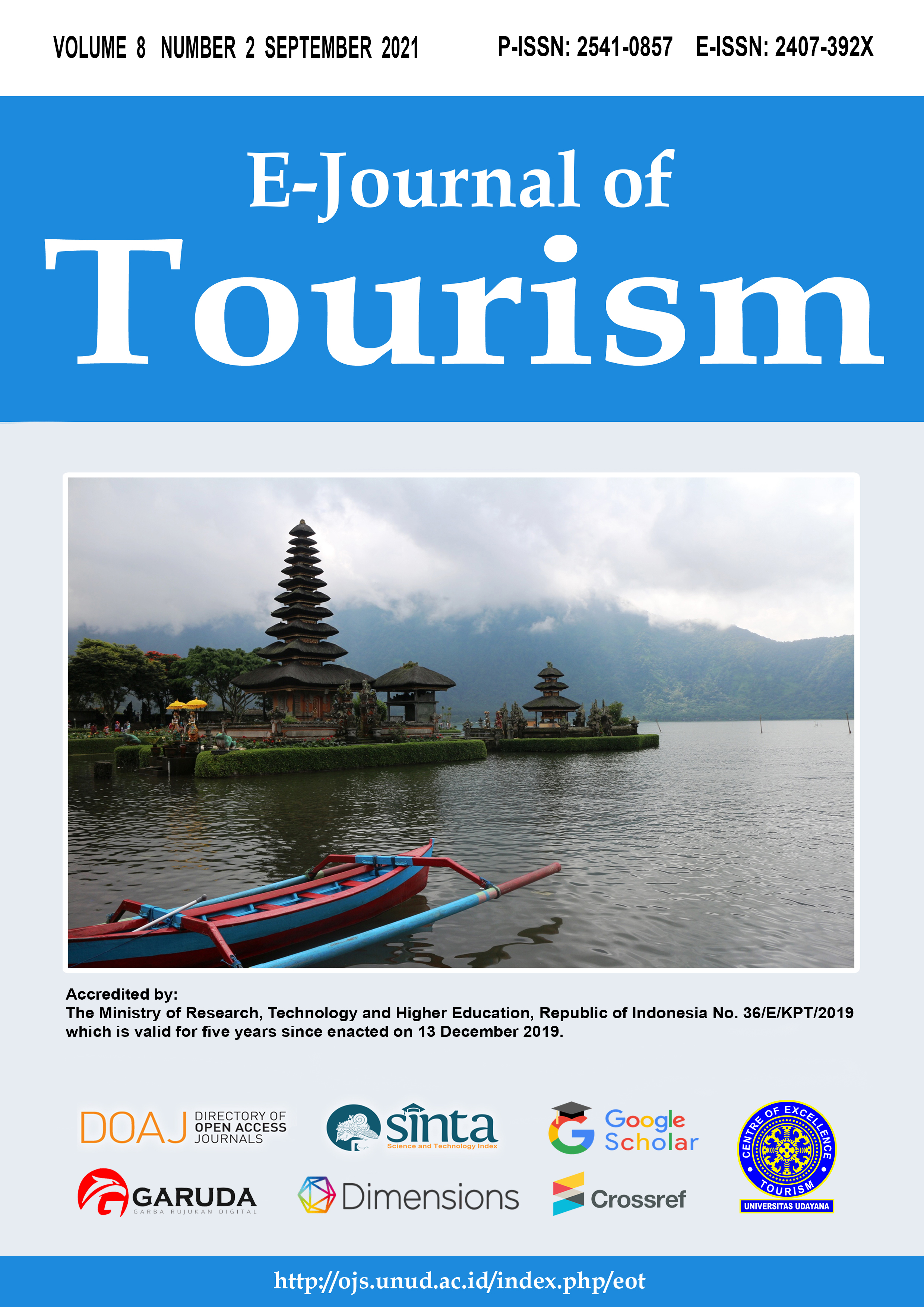Agrotourism Development in Sukalarang Village, Sukabumi Regency
Abstract
The diversity of attractiveness of agricultural cultivation supported by a strategic location, unspoiled environment, mostly agricultural land, and community friendliness can be the main attraction for tourists and Sukalarang Village, Sukabumi Regency has it all. This study aims to identify the attractiveness of Sukalarang Village through agrotourism and analyze its development strategy. The qualitative method is this research approach with online primary and secondary data sources through previous research, online media, and government regulatory documents. Data collection techniques using online questionnaires and interviews. The research analysis used was qualitative and descriptive. This finding is expected to be able to answer the potential attraction of Sukalarang Village agro-tourism because the people in Sukalarang Village still make agricultural and plantation activities their daily activities and formulate development strategies as an agro-tourism village with the initiation of plantation owners and the village government. Sukalarang Village.
Downloads
References
Brščić, K. (2006) ‘The impact of agrotourism on agricultural production’, Journal of Central European Agriculture, 7(3), pp. 559–563.
Buhalis, D. (2000) ‘Marketing the competitive destination of the future’, Tourism management, 21(1), pp. 97–116.
Departemen Pertanian (2003) Direktori Profil Agrowisata: Agrowisata Meningkatkan Pendapatan Petani.
Herrera, A. C. and Magdalena, L. (2004) ‘Agriculture, Environmental Services and Agro-Tourism in the Dominican Replubic. eJADE’, electronic Journal of Agricultural and Development Economics, 1(1), pp. 87–116.
Kiper, T. and Özdemir, G. (2012) ‘Tourism Planning in Rural Areas and Organization Possibilities’, in Landscape Planning. Intechopen.
Koentjaraningrat (1993) Kebudayaan, mentalitas, dan pembangunan. Jakarta: Gramedia Pustaka Utama.
Lane, B. (1994a) ‘Sustainable rural tourism strategies: A tool for development and conservation’, Journal of Sustainable Tourism, 2(1–2), pp. 102–111. doi: 10.1080/09669589409510687.
Lane, B. (1994b) ‘What is rural tourism?’, Journal of sustainable tourism, 2(1–2), pp. 7–21.
Lane, B. and Kastenholz, E. (2018) Rural tourism: new concepts, new research, new practice. Routledge.
López, E. P. and García, F. C. (2006) ‘Agrotourism, sustainable tourism and ultraperipheral areas: The case of Canary Islands’, PASOS Revista de turismo y patrimonio cultural, 4(1), pp. 85–97.
Mubyarto (1975) Pengantar Ekonomi Pertanian. Jakarta: LP3ES.
Mubyarto (2000) ‘Ceramah yang disampaikan dalam HUT Koperasi UGM tahun 2000 di Yogyakarta’.
Nuryanti, W. (1993) ‘Concept, Perspective and Challenges, makalah bagian dari Laporan Konferensi Internasional mengenai Pariwisata Budaya’, Yogyakarta: Gadjah Mada University Press. Hal, pp. 2–3.
Oppermann, M. (1996) ‘Rural tourism in southern Germany’, Annals of tourism research, 23(1), pp. 86–102.
Sanjiwani, P. (2016) ‘Kebijakan Pemerintah Terhadap Kelembagaan Kelompok Sadar Wisata (POKDARWIS) dalam Pengembangan Desa Wisata di Provinsi Bali.’, Paradigma dan Kebijakan Pariwisata, 1(13).
Saragih, B. (2001) ‘Paradigma Baru Pembangunan Ekonomi Berbasis Pertanian’, PT Loji Griya Sarana. Bogor.
Wijayanti, I. G. and Sanjiwani, P. K. (2019) ‘Pengelolaan Desa Wisata Kaba–Kaba, Kecamatan Kediri, Kabupaten Tabanan: Suatu Analisis Kualitatif’, Jurnal Destinasi Pariwisata, 7(2), pp. 344–351.
Windia, W. et al. (2007) ‘Model Pengembangan Agrowisata di Bali’, SOCA: Jurnal Sosial Ekonomi Pertanian, 7(1), p. 43979.

This work is licensed under a Creative Commons Attribution 4.0 International License.
The copyright of the received article shall be assigned to the journal as the publisher of the journal. The intended copyright includes the right to publish the article in various forms (including reprints). The journal maintains the publishing rights to the published articles.




















